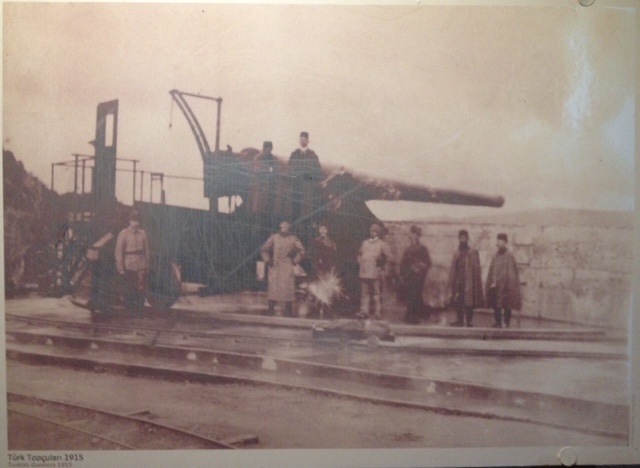Not only Anzacs and British troops were at Gallipoli fighting the Turkish army. There was also a divisional size ( two, in august) from day one (25th of april, 1915), first at the Asian side at Kum Kale (the Sand Castle) and transferred a few days later a bit to the north of Sedd-Ul-Bahr of the SS River Clyde collier fame. The 175e RI was one of the four regiments of the 1st Division of the Corps Expeditionnaire d'Orient among other colorful units like Zouaves, Foreign Legion and Senegalese soldiers.
The 175e RI was one of the four regiments of the 1st Division of the Corps Expeditionnaire d'Orient. The Adrian Helmet is still a few months away but the horizon blue capote is already distributed even if in a lighter tone than in the future.
The figures are all HAT WW1 Early French Infantry with the exception of a few officers taken from the Esci box of the Foreign legion (right figure in the command stand, with bent arm).
This picture came from Militaria magazine No 21 (1987, my goodness) and they are from an article about the 1915 Poilu. The text and photos mentions brown trousers and I went for it in this group.
I also got some inspiration from this picture taken in Egypt in which the trousers look to have a different tone than horizon blue. Which in fact may only be the shadow. Well, this is one of the beauties of our hobby, sometimes you will never know.
My late father built, among thousands of 1/43 cars, slot cars, HO trains, some 50 TAP (Transportadora Aérea Portuguesa) and FAP (Força Aérea Portuguesa). Most of them were kits and were given to friends after my father's passing but I kept all the scratch-built ones as they are true works of art. Luckily, there was also this 1/72 scale Farman MF 11 Shorthorn in the survivors, also completely scratch-built, that somewhat resembles the Farman F40 used by the MF98T squadron of the Corps Expeditionnaire d'Orient.
I only added an MG and the crew made out of old Airfix figures. The wings are made of wood and covered in tissue, like the real thing.
Also some french colors were painted on top of the portuguese ones.
My father only had this two pictures of the farman MF11 taken from the book Aviões da Cruz de Cristo.
The Farman MF11 is the one on top while the smaller Farman F40, used at Gallipoli, is at the bottom. They look similar but in fact the F40 only has one rudder which makes the two machines very different.
My dear father. Love you every day, miss you every day.

















.jpg)





